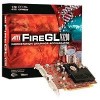ATI V3200 User Guide - Page 31
ATI Advanced Settings Tab - video card
 |
UPC - 727419411752
View all ATI V3200 manuals
Add to My Manuals
Save this manual to your list of manuals |
Page 31 highlights
ATI Advanced Settings Tab 25 Modifying the configuration parameters To change the configuration settings of a specific application, select the name of that application from the Configuration Profiles listbox. Click the Modify button. Now select or clear the rest of the configuration controls on this tabbed dialog to obtain the desired display parameters for the selected application. To remove the selected configuration profile completely, select the name of the application from the Configuration Profiles listbox click Delete. Note: You cannot delete the factory-set configuration profiles. Click the Apply or OK button to enable your Configuration settings. Configuration Settings Enable 8-Bit double-buffered Overlay Planes Force copy swap Wait for vertical retrace A default setting that uses 8 bits of each 32-bit frame buffer pixel as double-buffered overlay planes. A default setting that forces blit copy from the back-tofront buffer. This copies pixels quickly from memory to the screen, reducing flicker and increasing the frame rate. Note that OpenGL® buffer swaps are implemented using a back-to-front buffer instead of a screen flip. The buffer swap is 'synched' to the refresh rate of the monitor. Enabling this will lower the frame rate but reduce visual artifacts such as tearing. Disabling allows your application to run at the highest possible frame rate, regardless of the monitor's refresh rate, which is typically less than the frame rate at which the application will run. ATI Advanced Settings Tab The Advanced Settings tab enables you to apply ATI's SMOOTHVISION™ technology for full-scene anti-aliasing, and to utilize stereo shutter glasses for visualizing immersive 3D-stereo display (only available for those FireGL™ cards equipped with a stereo video connector). SMOOTHVISION™ improves image quality by removing jagged edges (anti-aliasing) from 3D images, resulting in smoother, more natural looking objects.















